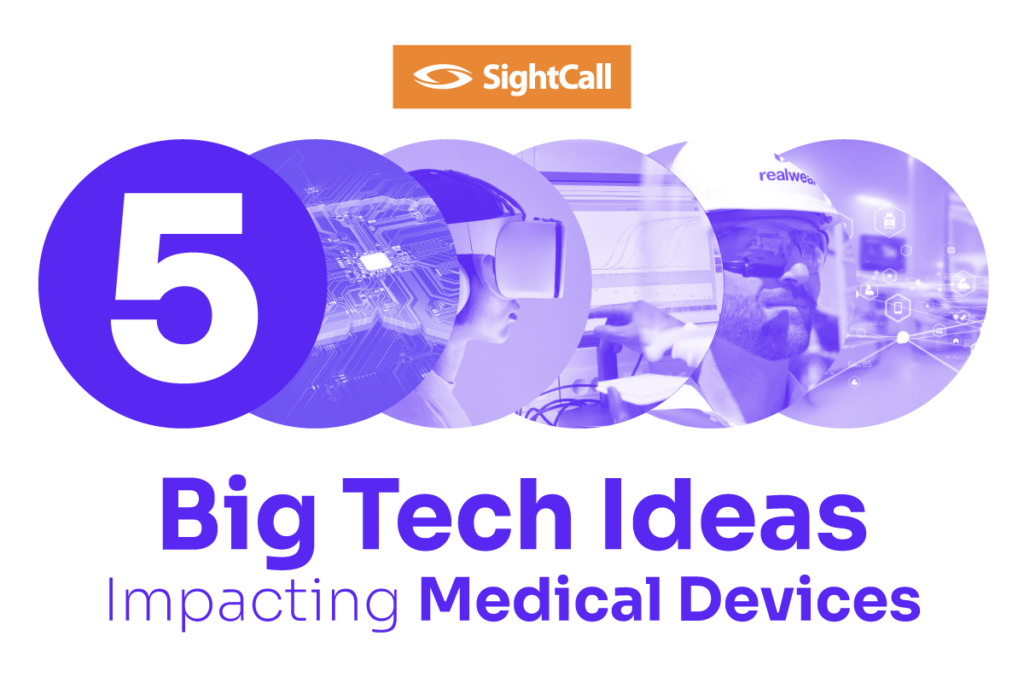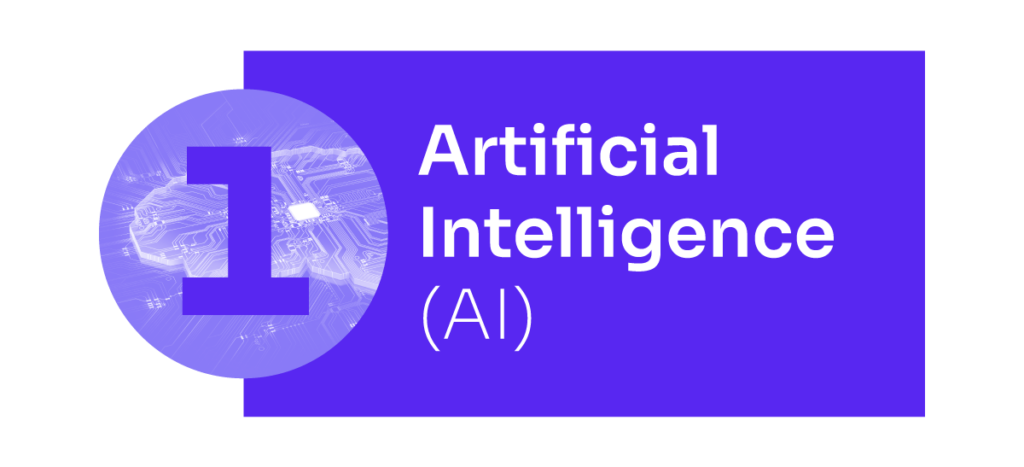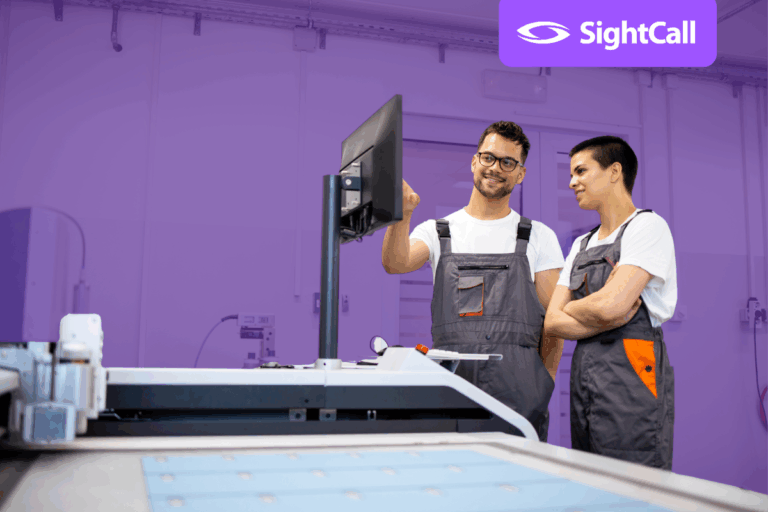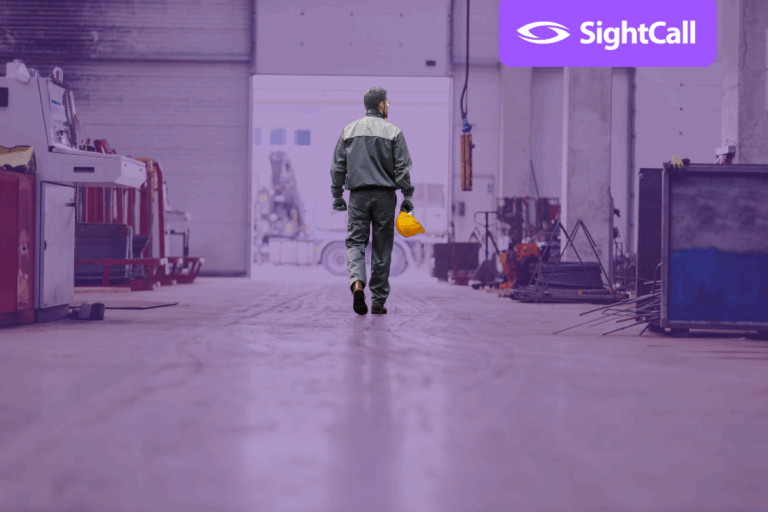Technology is helping change what’s possible for human beings in the field of healthcare.
Advancements in medical science are happening fast. Medical device technology is evolving at warp speed. And manufacturers seem to be closing the gap between reality and science fiction.
But no matter how bright and bold the future looks, machines will still break. They will still need people to fix them.
That’s why medical device manufacturers need to make sure their service organization can keep up with changing times.
1. Artificial Intelligence (AI)
What is it?
Artificial intelligence (AI) refers to the simulation of human intelligence in machines that are programmed to think and learn like humans. AI systems can be trained to perform a wide range of tasks, such as recognizing speech, playing games, making predictions, and controlling robots.
Popular AI techniques include:
-
- Machine learning (ML) – a method of teaching a computer to learn from data, without being explicitly programmed.
-
- Natural Language Processing (NLP) – a form of AI that enables machines to understand, interpret and generate human language, such as speech and text.
-
- Computer vision – A form of AI that enables machines to interpret and understand the visual world, such as recognizing images, videos and understanding the context.
Why does it matter?
AI-powered medical devices can analyze vast amounts of data and provide more accurate diagnostic results. For example, AI algorithms can be used to analyze images from medical imaging devices, such as X-rays and MRIs, to identify signs of disease or injury.
MedTech Dive reported that “researchers at MIT have developed a deep learning model that can predict individuals’ risk of lung cancer six years into the future from a single low-dose computed tomography (LDCT) scan.”
“69% of healthcare organizations are piloting or adopting AI.” – Accenture, 2020
What does it mean for service?
AI tools have gained momentum when it comes to areas like diagnosis, risk prediction, clinical decision support, and resource management. But clinical applications are currently facing more scrutiny and hurdles.
An article from the Pew Trust notes that the FDA “is currently considering how to adapt its review process for AI-enabled medical devices that have the ability to evolve rapidly in response to new data, sometimes in ways that are difficult to foresee.”
In terms of how AI functions in medical devices in the healthcare setting? The story is still being written.
When it comes to utilizing AI in the service of medical devices (AI empowered or otherwise), there are clear benefits. Operational and performance data from machines can be obtained and analyzed to predict and prevent issues. And computer vision can be deployed to make the service process more efficient.
SightCall is currently working with a leading medical device manufacturer to design and deploy a computer vision feature that will assist in identifying specific parts that need to be replaced. The result will lead to a much more efficient service workflow and streamline the parts replacement process.

2. Virtual & Augmented Reality
What is it?
Virtual reality (VR) refers to a computer-generated simulation of a three-dimensional environment that can be interacted with using specialized equipment, such as a VR headset. The simulated environment can include visual, auditory, and haptic (tactile) elements, and can be designed to be like the real world or completely imaginary.
Augmented reality (AR) is a technology that superimposes computer-generated images, sounds, or other information onto real-world scenes, in real time. This creates the illusion of virtual objects existing in the real world, and can be experienced through devices such as smartphones, tablets, and specialized headsets.
Why does it matter?
While VR has become popular in terms of entertainment and video games, the technology is a powerful tool for education. Advanced graphics and fluid interfaces can give people the sense of being completely immersed in the task at hand.
Pilots and soldiers have trained using VR for years, but so have physicians, researchers, and surgeons. Virtual reality gives medical professionals the ability to practice and master complex procedures before involving patients.
Healthcare facilities are also currently using AR for everything from training and surgery assistance to hospital navigation and drug development.
“Immersive VR training in healthcare can improve performance 230-300%” – Osso VR
What does it mean for service?
Broadly, it’s safe to say that we’ll be seeing more VR/AR medical devices being used in healthcare environments.
Decades of development have refined virtual reality technology. Today’s VR simulations are much less like blocky, wonky video games and getting closer every day to a more convincing reality.
That enhanced clarity has made it easier to incorporate VR into clinical applications like therapy and counseling, where it can be used to create immersive environments.
The evolution of wearable AR devices has made it practical for doctors to use AR technology for things like viewing patient charts and demonstrating procedures. There are even handheld AR devices in use that can visualize veins for more accurate blood draws and IV placement.
In terms of using the technologies as tools, service organizations have been all-in on VR/AR from the start. Modern field technicians regularly rely on them to add layers of vital information during service calls through special eyewear or on their tablets and smartphones.
The biggest benefit on-site is the elevated clarity that AR can provide. Using AR tools gives you the ability to see beyond the big picture… and even through walls.
Overlaying digital information on top of reality is an excellent way to provide real-time guidance and instruction between field engineers. It can reduce errors and speed the repair process.
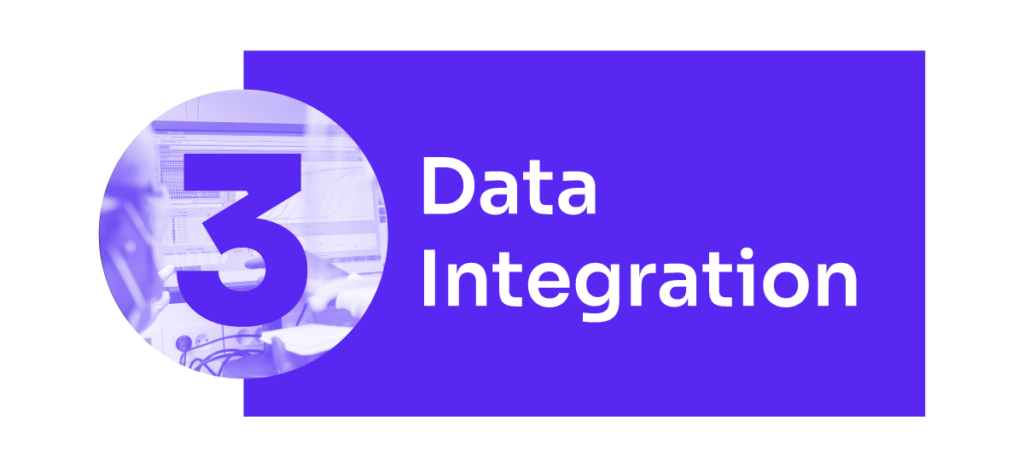
3. Data Integration
What is it?
Data integration refers to the process of combining data from multiple sources into a single, unified view. This can include extracting data from different formats, cleaning and transforming the data, and loading it into a common repository or data warehouse.
Why does it matter?
In hospitals and healthcare environments, data is king. From the recording of vital signs like blood pressure, temperature, and pulse, to results from more complex tests and scans, medical staff depend on data to inform every action and decision.
The goal of many hospitals is to move away from siloed data that comes from independent sources and devices. Instead of manually inputting this data into one system, the dream of integration is that all information is automatically sent to the same place.
In an article on the importance of bringing all that data together, GE Healthcare noted that “Medical device integration moves hospitals to the next level, freeing clinical staff to do what they were trained to do and allowing hospitals to reduce variations, become more efficient, and improve financial and clinical outcomes.”
“95% of healthcare data that’s collected goes unused.” – HealthLeaders 2023
What does it mean for service?
Today, the healthcare industry generates approximately 30% of the world’s data volume. And that number’s compound annual growth rate is expected to reach 36% by 2025! (RBC Capital Market).
Hospitals have come a long way from clipboards that hang at the foot of a patient’s bed. Collecting information in handwritten charts is now the exception. Digital data rules.
Integrated medical devices help eliminate human error. Replacing pen and paper processes and the manual compilation of disparate data saves time and money.
But for service, the biggest advantage of the new age of integrated and connected devices is that many of them can also share information about themselves. Having a direct line that allows service teams to “talk” with complex medical devices is a huge advantage when it comes to repairs and maintenance.
While true remote servicing may only be an option for some issues in some devices, the ability to troubleshoot a device before arriving on site is a huge cost saver.

4. Wearable Tech
What is it?
Wearable technology refers to electronic devices or equipment that can be worn on the body as an accessory, either as an extension of a smartphone or as a standalone device. These devices are designed to collect, monitor, and provide feedback on various physiological and environmental data.
Examples include smartwatches, fitness trackers, smart glasses, and smart clothing. These devices can be used to track physical activity, monitor vital signs, and provide notifications and other information to the user.
Why does it matter?
Reports predict that the wearable device industry will reach close to $380.5 billion by 2028.
Wearables have completely changed the healthcare equation. While many of us have used trackers for fitness, more companies are making devices for critical care, at-home treatment, and the long-term management of serious illnesses.
Advances in technology give doctors an unprecedented ability to monitor patients in real-time, reducing the need for in-person visits. This puts wearables in a real position to become an important part of the healthcare system “front lines.”
What happens when you don’t have to visit your doctor for a quick vitals check? All you need to do is glance at your wrist. Want to do your own sleep study? Monitor irregular heart activity? Send your contraction cycle in real-time to your OB/GYN? No problem.
Wearable tech has become much more accessible and effective. The devices are getting smarter… and smaller. And there is a whole new wave of devices that are implantable, ingestible, and injectable.
“30% of American adults use a wearable healthcare device. Nearly 50% use it every day, with more than 80% willing to share the data with their provider.” – Patterns of Use and Key Predictors for the Use of Wearable Health Care Devices by US Adults 2020
What does it mean for service?
It’s hard to say. Because many wearables are sold as consumer products, manufacturers will need, at minimum, an advanced and robust customer service platform that can assist with setup, operation questions and maintenance.
But high costs of equipment may push trends towards rental or subscription models. And since wearables will be constantly connected, digital security will be a top priority.
In terms of service, future challenges will be as varied as the devices themselves.

5. Internet of Medical Things (IoMT)
What is it?
The Internet of Medical Things (IoMT) refers to the network of medical devices, equipment, and other objects that are connected to the internet and can collect, share, and analyze data. These devices can include wearables, as well as more specialized equipment, such as blood glucose monitors, pacemakers, and diagnostic equipment.
IoMT devices often use wireless communication technologies such as Bluetooth, WiFi, and cellular networks to transmit data to cloud-based platforms, where it can be analyzed and shared with healthcare professionals.
Why does it matter?
The IoMT gives healthcare organizations a powerful tool when it comes to collecting and organizing data. It gives doctors the ability to monitor patients remotely and inside the hospital. But it can also solve a big problem for larger health systems struggling to manage assets and inventory.
RFID tags and sensors can be used to track and manage medical equipment, such as wheelchairs and IV pumps, and ensure that they are in the right place at the right time. IoT devices can also be used to track and manage medications and supplies and ensure that they’re available when needed.
“Globally, the healthcare industry had the highest percentage increase in weekly cyberattacks of any industry sector, with an increase of 74% from 2021 to an average of 1,463 attacks per week.” – HIPAA Journal 2023
What does this mean for service?
Above and beyond the value that IoMT provides for collecting patient data, connected facilities are cutting costs when it comes to asset management and inventory.
Today the IoMT can provide real-time asset tracking for medical devices like carts, beds, and wheelchairs. It can even monitor patients, staff, and visitors.
A connected community of devices is a net positive for med device companies who can rely on technology that talks back to anticipate and prevent operational issues.
In terms of inventory and asset management, devices are much easier to fix when they can be found. And a robust IoMT network allows for remote performance tracking and predictive maintenance.
The Bottom Line
Technology is a bullet train that doesn’t make local stops.
If you keep up with the healthcare technology headlines, you’ll read something amazing every day.
The bottom line for medical device manufacturers is to make sure that the rest of your business is keeping pace with the speed of change. Because even if your product is a shining example of the scientific cutting edge, your service organization needs to be just as innovative.
Behind every big tech breakthrough is an opportunity to improve your service and support the evolution of your product.
